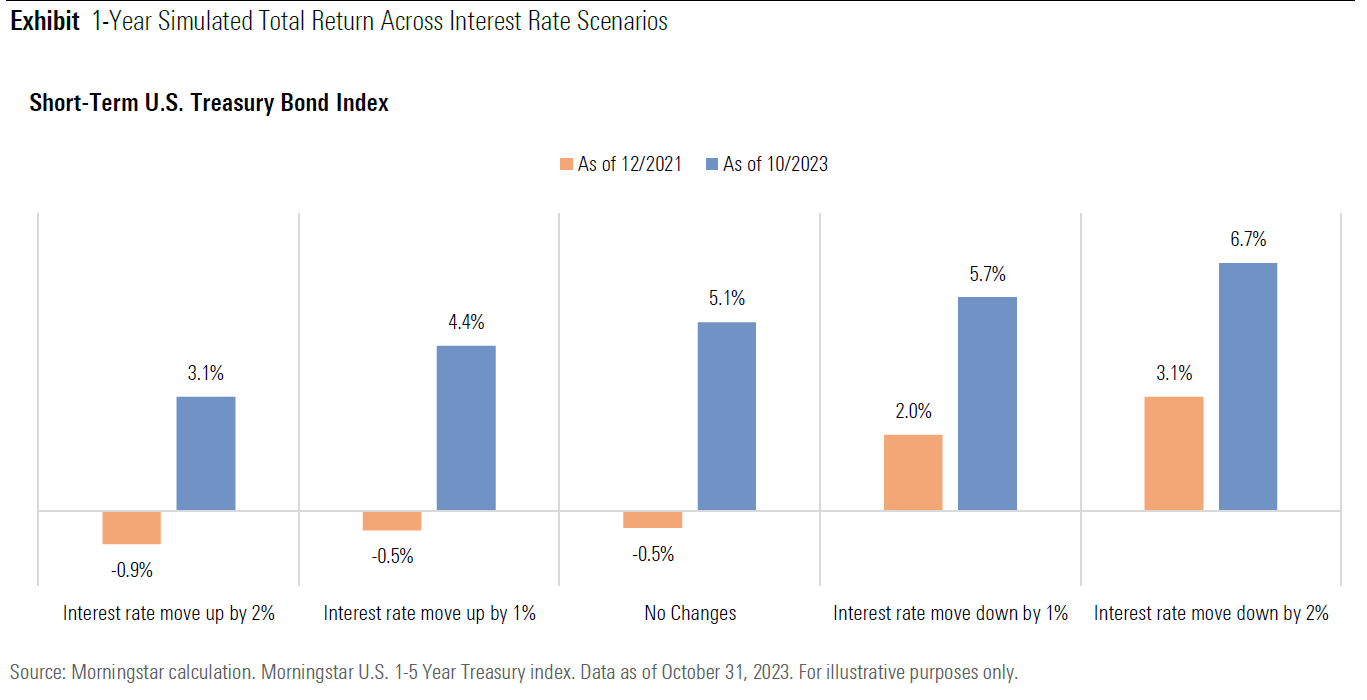
Salal Investment Services
Available through CUSO Financial Services, L.P.*
Adrian A. Hedwig
Financial Advisor, CUSO Financial Services, L.P.*
Available by appointment at all Salal Credit Union branches.
Virtual and phone meetings also available.
P: 206.607.3481
F. 206.299.9530
AdrianH.CFSInvest@SalalCU.org
Key Takeaways
- It is possible to use the major reset in interest rates to your advantage, as long as you understand the risks associated with it.
- For the first time in decades, we observe positive expected real yields. The transformation in the income landscape is meaningful, with certain asset classes gaining attraction.
- It is not just about chasing the yield offered in different asset classes. Investors must realize the importance of considering credit risk and ensuring dividend stability.
Turning Ideas into Actions for 2024
Income Investors to Thrive: For new money, the current income landscape is the most attractive we’ve seen in at least a decade. Retirees, for example, can produce cashflows from their assets without yield chasing.
Watching Credit Spreads: While absolute yields are attractive, a lot of that comes from the reset in government bond yields. The spread is not overly attractive, given the risks, so corporate bonds need to be managed.
Short-Term Bonds Well Placed: We see merit in bonds of all types as we enter 2024, but short-term bonds look particularly attractive, depending on the role they play in a portfolio.
The Great Reset with 5%+ Interest Rates
It is no secret that the income landscape has changed.
• Interest rates have increased from practically zero across the developed world (even negative in some cases) and have broadly reset at the 4%-5.5% level, depending on the country.
• Bond yields have anticipated these rises and increased too, with 4%-5% yields generally available across the curve.
• Riskier bonds, like high yield, have increased from as low as 4% in 2022 to now offering around 9% today.
• Meanwhile, dividend yields have hardly budged and are now materially lower than yields available in fixed income for most sectors and geographies.
Let’s kick off with the large-scale reset in interest rates we’ve witnessed lately. Drifting up from their historical decade-lows, rates are now near the 5% mark, ushering in a significantly different “base rate” to consider for all asset class views. This shift has upended the investing landscape as we knew it, with opportunities and risks worth delving into.
We have a specific focus on income-producing assets, with their yields undergoing noticeable changes. Yet, the reset in interest rates hasn’t come without risks. We’ve seen significant price falls in asset classes that were historically considered “low-risk” by textbook definitions—including the U.S. 10+ Year Treasury Bond index, which is down -41.7% from July 31, 2020 to November 15, 2023.
As advocates for independent thinking, we see opportunities being created from these moves. It’s worth noting that these transformations continue to carry certain risks.
Yields Available Are Better Across the Board, with Areas of Attraction
As we delve into the world of income-producing assets, the noteworthy shift in base rates has greatly impacted the investment case. Navigating this shift can yield fruitful results if we understand how to utilize the fluctuations to our advantage, while also being wary of the potential risks involved.
Central to this discussion is the major increase in headline yields available across various income-producing assets. Although, it’s important to note that some asset classes shine brighter than others.

The beauty of the current investing landscape also lies in the wide array of options, which can be matched to the mandate of a portfolio. For example, if you have a short time horizon, we see opportunities at the shorter end of the yield curve for the first time in decades. For those with a longer time horizon, we can express our views across the shape of the yield curve to get the right balance.
As we navigate these shifts, we’ve reevaluated the broad equity and fixed-income allocations within income portfolios, with a move out of equities and into bonds. This is mostly a shift in allocating capital to areas offering the higher yields. Within bonds, we like short-dated bonds, given the inversion we see across most developed curves, although we do see growing appeal in longer-maturity bonds.
For investors prioritizing stability, dividends are another area to consider. However, we’ve not seen the same uptick in dividend yields as we’ve seen in fixed-income yields.
For example, the yield on the Morningstar U.S. Core Bond index has risen from 1.2% to 5.4% between November 2020 and November 2023. Meanwhile, the dividend yield of the Morningstar U.S. Market index has risen just 0.3% from 1.2% to 1.5% over the same period.
In the realm of dividend-paying stocks, it aids in the careful selection of these stocks while mitigating the risk of dividend cuts. Areas offering attractive dividends are financials, U.K. equities, master-limited partnerships (MLPs), and infrastructure.
Finally, the reset in base rates has brought into question the changing merits of a 60/40 portfolio (60% in stocks, 40% in bonds, or equivalent mixes), which we believe are likely overstated. In our view, the merit of a 60/40 portfolio has improved following the increase in yields.
Positive Views of Income-Producing Asset Classes
How can investors take advantage of the reshaping in the income and interest rate landscape? The shape of the yield curve and regional differences must be tackled in this context, as they are integral to understanding the opportunity set.
• Short-dated bonds generally represent a great starting point by yielding above fair value, rendering them a compelling investment choice. This applies across sovereign and corporates, with more companies borrowing for shorter periods.
• As a safety net against potential market uncertainties, longer-dated government bonds, such as U.S. Treasuries, are expected to offer an effective hedge in most macroeconomic scenarios.
• Dividend stocks maintain their position as a feasible option for investors, though their appeal is somewhat muted due to the relative attraction of bond yields.
• Emerging-markets bonds appeal to us as a non-core opportunity. Our enthusiasm toward these bonds remains, although it has been modestly tempered by the marked shift in other opportunities. Specifically, the allure of developed-markets bonds has prompted us to moderate our favorable outlook of emerging-markets bonds.
• Cash is now a tool to be considered, although we don’t expect it to play much of a role for long-term investors, given the likelihood of bond and equity outperformance.
The shape of the yield curve is an important consideration here. Despite the “higher for longer” narrative, we still see an inverted yield curve, where we can capture higher yields for bonds that mature in the short term, while those that mature in 10+ years’ time continue to be less attractive.
We must reinforce the positive case for bonds—both short and long duration—with their yields now above fair value for the first time since the global financial crisis. That said, an inverted yield curve can be a sign of recessionary pre-conditions, with longer-dated bonds expected to provide a necessary hedge.
Bond Math Is Favorable
One effective way of thinking about the shape of the yield is to focus on bond math, where we can see the expected gain in different scenarios and how the range of outcomes have shifted:

Looking for areas that warrant a dose of caution:
- Credit spreads: We perceive corporate bonds as only providing a slight increment in extra yield. Although this might seem lucrative, it is tempered versus government bonds.
- High-yield debt: Related to the above, it may be tempting to think 9%+ yields are attractive. However, despite offering high absolute yields, we caution the inherent risks tied with these assets. The lure of high returns should always be weighed against a potential default cycle, which is not reflected in spreads.
- Dividend chasing: For investors who utilize rule-based vehicles, such as active ETFs, to access the high-dividend names, many dividend indexes can experience big shifts in the sector composition. Investors need to be mindful of sector exposure they are getting. Moreover, while dividends remain a key area to explore, and we express this in our portfolios, we do note dividend instability could potentially pose a risk to income investors. Sectors such as energy and financials are more prone to dividend cuts during downturns.
As we look toward the next year, it is important to remain adaptable and open to adjusting our investment views, embracing the evolving landscape, and harnessing income-producing assets where sensible.
What Risks Are Introduced from 5%+ Rates?
There are plenty of available investment strategies you can employ to navigate these risks and boost the overall return prospects of a portfolio. However, every decision should factor risk into it. The first is that we must weigh the increase in bond supply—especially a U.S. Treasury maturity wall—which can significantly affect the market by amplifying the volume of bonds. The U.S. Department of the Treasury has confirmed the need to borrow more than $800Bn in the first quarter of 2024, which could test the appetite of investors. All else being equal, this could result in higher yields. For corporate bonds—whether investment grade or high yield—one obvious risk is a deterioration in company fundamentals. This will often show first among high-yield bonds, where we are seeing early signs of strain—albeit from a historically low base. It is worth noting that high-yield bond issuance is not expected to materially increase in 2024, with most of the debt due to mature in the 2026 to 2029 window. The credit quality has also improved for high-yield bonds, so it is arguably better positioned than in prior periods of deteriorating fundamentals. In any case, we identify three areas worthy of your watchlist regarding impairment:
- Revenue and earnings growth are now declining.
- Leverage ratios have increased, although remain well within historical norms.
- Interest coverage has edged lower from strong levels, meaning companies may find themselves struggling to make repayments.
However, it is worth repeating that we see corporate fundamentals as reasonable and see no immediate risks of a significant rise in defaults.

Looking for other risks, inflation could go higher. This is not our base case but is worth protecting against, with inflation-linked bonds a relatively cheap insurance option at current breakeven levels. More generally, we’ve seen a major uptick in bond volatility, especially in long-term bonds, as there is a heightened sense of uncertainty for investors. This does not necessarily pose a risk of impairment, but it could affect the behavior of investors. On the flip side, a continued duration rally is possible if rates fall quickly—perhaps in a deep recession, characterized by a drop in interest rates—which can negatively influence the relative performance of short-dated bonds. In this scenario, they may not experience the same level of increase as their longer-term counterparts. This creates reinvestment risk—the risk that a bond matures after rates fall and investors need to reinvest the proceeds at lower rates—for short-dated bonds.
An Uplift for Newly Invested Money
It is important to understand that the majority of the positivity in income-producing assets comes from price moves, not rises in dividends or new bond issuance. However, for all future money invested, you’ll access the better yields, along with a gradual improvement from new issuance. The potential for higher yields exists across the entire opportunity set, which is an exciting prospect indeed. However, amid the allure of stability in dividends, we must also consider the risk of dividend cuts in certain sectors and the need to watch for a potential credit default cycle.

